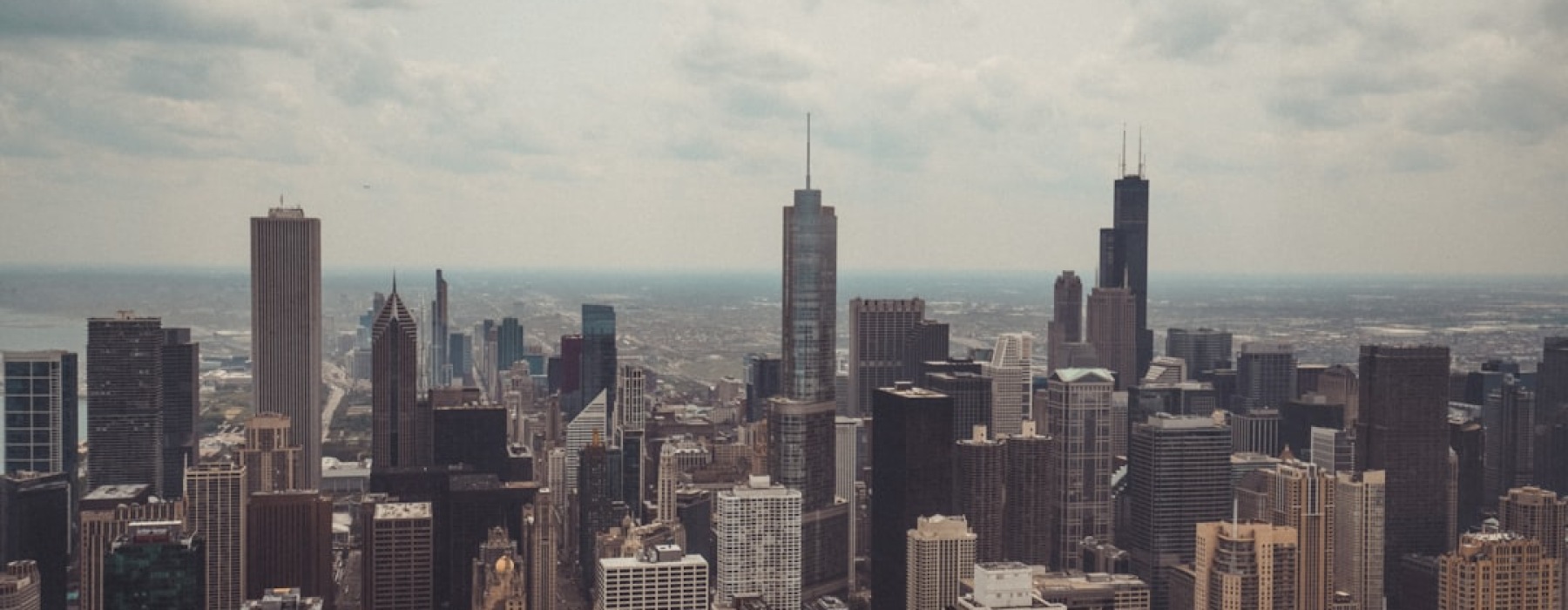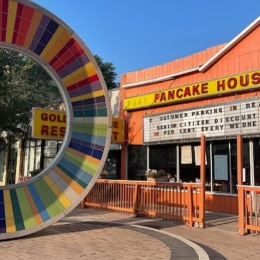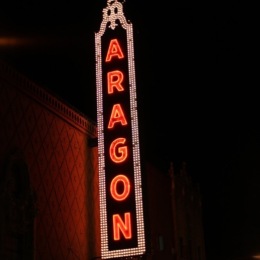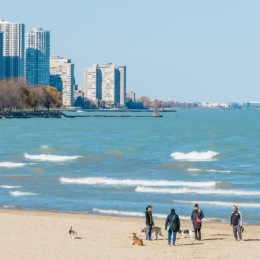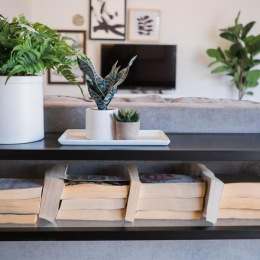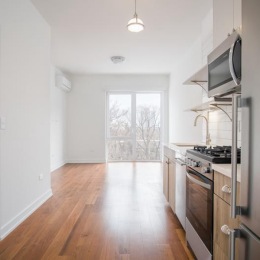Understanding Chicago's 1-Bedroom Rental Market
The average rent for 1 bedroom apartment in chicago ranges from approximately $1,850 to $2,250 per month, with significant variation based on neighborhood, building type, and amenities.
Quick Facts About Chicago 1-Bedroom Rents:
- City-wide average: $1,900-$2,200 per month
- Typical size: 700-750 square feet
- Price range: Varies significantly across the city, with premium neighborhoods exceeding $3,400+
- Year-over-year change: Generally increasing 2-8% annually
- Best time to rent: Winter months, when prices may differ and competition is lower
Chicago's rental market reflects the city's diverse neighborhoods and housing stock. From high-rise apartments in downtown's Loop district to charming walk-ups in tree-lined neighborhoods like Uptown and Edgewater, rent prices vary dramatically across the city's 77 community areas.
The Windy City's rental costs are influenced by several key factors: proximity to downtown, access to public transportation, building amenities, and neighborhood character. While some areas command premium prices due to their location near Lake Michigan or major employment centers, other neighborhoods have different pricing structures while still providing easy access to Chicago's cultural attractions and job opportunities.
Understanding these price variations helps renters make informed decisions about where to live based on their lifestyle preferences.
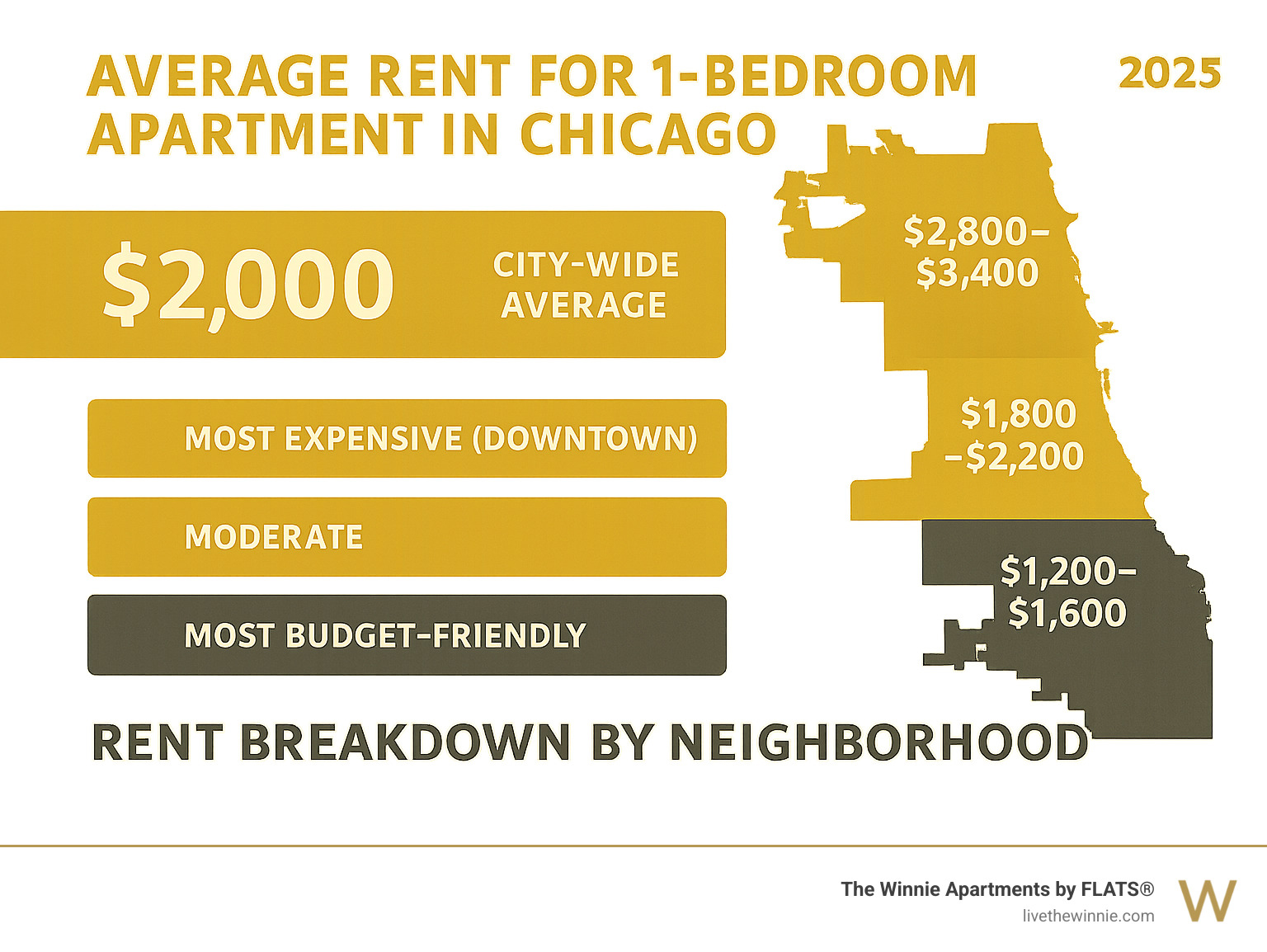
The Current Average Rent for 1 Bedroom Apartment in Chicago
So, you're curious about the average rent for 1 bedroom apartment in chicago? It's a great question, but the answer can feel a bit like a moving target! That's because this number is like a snapshot in time, and it can change based on who's reporting it and how they gather their data. Different real estate studies use different methods, which is why you might see slightly varied averages.
Generally speaking, you can expect the city-wide average for a 1-bedroom apartment to fall within the range of about $1,850 to $2,250 per month. While some market surveys suggest it's closer to $2,225 when considering all types of homes and sizes, this range gives you a good idea for a single-bedroom space. This bit of variation just shows how lively and active Chicago's rental scene truly is!
When it comes to size, a typical 1-bedroom apartment in Chicago often measures around 700 to 750 square feet. Of course, you'll find homes both smaller and more spacious than that. Just keep in mind, a little extra room usually means a slightly higher rent.
To stay current on pricing trends, keep an eye on reputable rental market reports and local data releases from housing research organizations and brokerage firms. These sources update their findings regularly, giving prospective renters a clear picture of where prices are headed.

Chicago Rent vs. The National Average
How does Chicago stack up against the rest of the country when it comes to rent? Comparisons to the national median rent vary; some data sets show Chicago's median rent near the national figure, while others indicate it is higher, with housing costs potentially 14% to 48.9% more. This difference often comes down to how "national average" is defined and what types of rentals are included in the math.
No matter the exact percentage, it's widely understood that living in a major city like Chicago means housing costs are generally above the national average. This is pretty common for big urban areas, where lots of people want to live and work. Beyond just rent, the overall cost of living in Chicago is also typically higher than the national average, often cited as 15% to 17.1% more.
When looking at the overall cost of living, different categories show different relationships to the national average. For example, while housing and transportation costs are typically higher, other categories such as utilities may track differently when compared to national figures. Groceries, everyday goods, services, and healthcare costs tend to be just a little bit above national figures. For a detailed breakdown of all these expenses, organizations like the Council for Community and Economic Research (C2ER) offer valuable insights through their Cost of Living Index data.
Recent Changes in Chicago's Rental Market
Chicago's rental market has been dynamic over the past year. The market has seen a mix of changes. While some reports showed a small dip in overall rent prices year-over-year, others have pointed to a steady rise for 1-bedroom apartments, sometimes as much as 0.82% to 8% annually. Even looking at month-to-month changes, increases have been noted, showing a market that's quite robust.
So, what's behind these shifts? It's usually a blend of things, especially renter demand and the general "market temperature." When lots of people are looking for a place, competition for available apartments heats up, which can push prices upward. On the flip side, if fewer people are searching, prices might level out or even dip slightly. Monitoring these trends helps in understanding the market's ebb and flow. Those exploring their options can take a peek at the Studio and 1 Bedroom Apartments to see what's currently available.
A Tour of Chicago's Neighborhood Rental Prices
Chicago is a city of distinct neighborhoods, boasting 77 official community areas, each with its own unique character, amenities, and, yes, rental price points. The impact of location on rent here is undeniable. A significant difference in rent is often seen between downtown areas, the vibrant North Side, and the more residential South and West Sides. Factors like walkability, proximity to public transit, and local amenities all play a crucial role in determining how much you'll pay.
Neighborhoods with Higher Price Points
Some of Chicago's neighborhoods consistently rank among the priciest for rentals, including 1-bedroom apartments. These areas often feature luxury high-rise buildings, stunning city or lake views, and unparalleled access to the city's central business district, entertainment, and fine dining.
- Streeterville: Known for its upscale high-rises and proximity to Magnificent Mile shopping and Lake Michigan, rents here are among the highest.
- River North: A hub for art galleries, restaurants, and nightlife, 1-bedroom apartments in this trendy area can command premium prices, especially in newer buildings.
- West Loop: Once an industrial zone, this neighborhood has transformed into a culinary hotspot with modern lofts and apartments, making it a desirable—and thus pricier—place to live.
- Fulton Market: Adjacent to West Loop, this area has also seen immense development, with luxury apartments and offices driving up rental rates.
- The Loop: As Chicago's central business district, living here means being in the heart of the action, with many high-rise options and direct access to everything downtown offers.
- Near North Side: Encompassing areas like Gold Coast and Old Town, this neighborhood offers a mix of historic charm and modern luxury, all within close reach of downtown.
These neighborhoods appeal to those seeking an urban lifestyle with all the conveniences right at their doorstep.
Neighborhoods with Varied Price Points
Beyond the city's most expensive enclaves, Chicago offers a diverse array of neighborhoods where rental prices for 1-bedroom apartments can vary significantly, often providing a balance of urban amenities and a more residential feel.
- Uptown: A vibrant and historic district, Uptown offers a mix of classic architecture and modern developments. The average rent for 1 bedroom apartment in chicago's Uptown area has different rent ranges than downtown, while still providing excellent public transit access, a thriving music scene, and beautiful lakefront parks. Explore the Apartments for Rent in Uptown Chicago, IL.
- Edgewater: North of Uptown, Edgewater is known for its diverse community, beautiful beaches, and charming local businesses. Rental prices here vary, especially for those looking for a lakefront lifestyle with a different pricing structure than downtown.
- Lakeview: A popular neighborhood with a lively atmosphere, Lakeview offers a wide range of housing options. Rents can vary greatly depending on proximity to the lake, Wrigleyville, or specific amenities.
- Lincoln Park: While some parts of Lincoln Park can be quite exclusive, the neighborhood also offers a variety of housing with a range of price points, especially further from the park itself. It's beloved for its green spaces, zoo, and dining.
- Logan Square: A trendy neighborhood known for its independent shops, restaurants, and active arts scene. It has seen significant development, leading to a broad spectrum of rental prices.
- Hyde Park: Home to the University of Chicago and rich in cultural institutions, Hyde Park offers a unique blend of academic charm and historic architecture. Rental prices here differ from some North Side neighborhoods.
To illustrate the range, here's a general comparison of how the average rent for 1 bedroom apartment in chicago might look across some of these areas:
| Neighborhood | Average 1-Bedroom Rent Range (Approx.) |
|---|---|
| Streeterville | $2,900 - $3,400+ |
| West Loop | $2,800 - $3,400+ |
| Uptown | $1,500 - $2,200 |
| Edgewater | $1,400 - $2,000 |
Exploring the average rent for 1 bedroom apartment in chicago across different communities
Beyond the well-known hotspots, Chicago's many community areas present a spectrum of living experiences and rental costs. The further one moves from the central business district and the lakefront, the more diverse the rental landscape becomes.
Some neighborhoods on the South and West Sides offer more expansive living spaces and feature different price points compared to the North Side or downtown. However, even within these broader regions, individual communities have distinct characteristics. For example, some areas might offer exceptional access to sprawling parks and green spaces, while others are renowned for their vibrant local dining scenes, featuring cuisines from around the world. Shopping districts, whether busy commercial strips or quaint local boutiques, also contribute to a neighborhood's appeal and, consequently, its rental values.
Exploring these varied communities allows renters to find the perfect balance between lifestyle preferences and rental expectations. For those drawn to the energy and amenities of a diverse urban setting, areas like Uptown are worth exploring, with its blend of historic charm and modern conveniences. Find more about what this area offers at Uptown Apartments for Rent Chicago.
Key Factors That Shape Chicago Rent
Beyond location and neighborhood, several other elements significantly influence the average rent for 1 bedroom apartment in chicago. Understanding these factors can help renters steer the market and find a place that fits their needs.
One major factor is the building type. Chicago offers a wide array of residential structures, each with its own rental characteristics:
- High-rise buildings: Often found in downtown and near-lakefront areas, these modern towers typically offer extensive amenities and stunning views, leading to higher rents.
- Courtyard buildings: A classic Chicago staple, these mid-rise buildings often feature charming shared courtyards and can offer a more traditional city living experience. Rents here can vary widely based on renovation status and location.
- Walk-up apartments: Common in many residential neighborhoods, these smaller buildings (often two to four flats) can sometimes offer a more intimate living experience.
The apartment condition also plays a crucial role. A newly renovated unit with modern finishes and appliances will almost always command a higher price than an older apartment that hasn't been updated. Renters often weigh the appeal of a fresh, move-in-ready space against the different rental rate of a unit that has more vintage character.
How amenities affect the average rent for 1 bedroom apartment in chicago
Modern renters value convenience and comfort, and the amenities offered within an apartment building can significantly impact the rental price. It's not just about the four walls anymore; it's about the lifestyle the building supports.
- In-unit laundry: A highly sought-after feature, having a washer and dryer right in your apartment adds immense convenience and is often reflected in a higher rent.
- Fitness centers: Access to an on-site gym is a popular amenity that adds value.
- Rooftop decks: Offering communal spaces for socializing, relaxation, and breathtaking city views, these can be a major draw, especially in high-rise buildings.
- Coworking spaces: With the rise of remote work, dedicated co-working areas within a building have become a valuable amenity, making it easier to separate work from home life.
- Parking availability: In a dense city like Chicago, secured parking (whether indoor or outdoor) is a premium feature and can add a significant amount to the monthly cost or be a separate fee.
These luxury features are designed to improve the living experience, and they contribute to the overall value proposition of a property. For those seeking a heightened living experience, exploring options like Luxury Apartments Uptown Chicago might be a great starting point.
The Role of Transit and Seasonality
Two other powerful forces shaping Chicago's rental market are public transit access and the time of year one chooses to look for an apartment.
Proximity to CTA 'L' lines is a game-changer in Chicago. Living near a Red Line, Brown Line, or Blue Line station means quick and easy access to downtown, major employment centers, and popular neighborhoods without the need for a car. This convenience is highly valued and often translates into higher rents for apartments within walking distance of an 'L' stop. Similarly, access to Metra commuter rail lines can influence rental values in neighborhoods that serve suburban commuters. The Chicago Transit Authority website is a great resource for understanding the city's extensive public transit network.
Seasonality also plays a significant role in rental pricing. A "peak leasing season" is often seen during the summer months (roughly May to August). This is when demand is highest, as many people prefer to move in warmer weather, and recent graduates or new job holders relocate. Increased demand leads to more competition and, typically, higher rental prices.
Conversely, the "off-season" for leasing is generally during the colder winter months (November to February). During this time, fewer people are moving, competition is lower, and landlords might be more willing to offer incentives or adjust prices to fill vacancies. Some reports even suggest a typical drop in rental prices of around 3.4% between the peak summer and slower winter months. For those looking for different market conditions, winter can be an opportune time to search.
Frequently Asked Questions about Chicago 1-Bedroom Rents
What is a typical size for a 1-bedroom apartment in Chicago?
A typical 1-bedroom apartment in Chicago is usually a space somewhere between 650 to 850 square feet. This size generally gives you a comfy living area, a separate bedroom, and, of course, a kitchen and bathroom. It’s a classic setup for city living!
But here's a fun fact: just like every Chicago deep-dish pizza is unique, so are 1-bedroom apartments! You'll find all sorts of layout variations. Some might have traditional closed-off rooms, giving you distinct spaces. Others accept a more open-concept floor plan, where the living room and kitchen flow together, perfect for entertaining.
Some apartments might feel bigger thanks to clever design, while others might offer a super spacious bedroom or a grand living room. To get the clearest idea of what's waiting for you, it's always a good plan to check out the Floor Plans. And hey, if you're looking for something with a bit more room, or a different kind of space, the Large Studio Apartments Uptown Chicago might just surprise you with their generous layouts.
How does seasonality affect rent prices in Chicago?
Chicago's seasons bring more than just weather changes; they also create interesting shifts in the rental market! It's all about timing when you're looking for the average rent for 1 bedroom apartment in chicago.
A big summer demand increase is seen from about May through August. This is when the weather is beautiful, college graduates are moving, and folks are starting new jobs. Everyone wants to move when it's sunny, right? This rush means lots of competition for apartments, which can lead to rents inching up. Landlords may have less flexibility on terms during these busy months.
Then, as the leaves change and the temperatures drop, the market heads into winter price dips (usually November to February). Not many people are eager to move furniture in the snow! This slowdown means lower demand and often, less competition. You might find landlords a bit more open to offers or even offering special deals to fill units during these quieter times.
So, for those who don't mind bundling up, winter can be the best time to search for an apartment in Chicago. You'll likely face lower competition levels, giving you more time to explore and make a decision without feeling rushed. Just remember to factor in those heating costs if you're moving in the colder months!
Which Chicago neighborhoods have a high concentration of rental apartments?
Chicago is a city of incredible neighborhoods, and some truly shine when it comes to the sheer number of rental apartments available. These areas are often busy, vibrant, and packed with choices, thanks to their urban vibe, closeness to business hubs, or how they've grown over the years. You'll find a lively mix of sleek high-rise buildings, charming mid-rise apartment complexes, and cool converted lofts, offering something for every taste.
Among the neighborhoods where you'll find a high concentration of rental units are:
- Downtown Chicago: This includes spots like The Loop, River North, and Streeterville. These areas are absolutely brimming with residential towers, perfect for city lovers who want to be right in the middle of all the action.
- The North Lakefront stretch: Think neighborhoods like Lincoln Park, Lakeview, and Uptown (where The Winnie is located!). These areas boast a huge selection of rental homes, from classic walk-ups to modern high-rises. Plus, they offer fantastic access to Lake Michigan and lively community scenes.
- West Loop: This area has grown so much! It's seen a boom in new apartment buildings, especially attracting young professionals and anyone looking for a trendy, amenity-rich lifestyle.
- River North: Beyond its famous art galleries and restaurants, River North is also home to a great many high-rise apartment buildings.
These neighborhoods are alive with energy and make getting around a breeze, with easy access to public transportation, fantastic dining, entertainment, and job opportunities. If you're curious about the freshest options and what's newly available, taking a peek at listings like New Apartments Uptown Chicago can give you a great sense of the exciting rental scene in these popular spots.
Find Your Next Home in Chicago
Chicago's rental landscape is as diverse as the city itself, stretching from gleaming downtown high-rises to cozy walk-ups in tree-lined neighborhoods. Understanding what drives the average rent for 1 bedroom apartment in chicago helps renters make smarter choices when searching for the perfect home.
The beauty of Chicago lies in its variety. Whether one is drawn to the energy of River North's art galleries, the lakefront charm of Lakeview, or the vibrant community spirit found in neighborhoods like Uptown, there's truly something for everyone. Each area offers its own personality, amenities, and lifestyle – from quick access to the 'L' lines to proximity to parks, restaurants, and cultural attractions.
When apartment hunting, it's worth thinking beyond just the monthly rent. The right home should match how one wants to live day-to-day. Is it necessary to be steps from public transit for a commute? Is the ideal neighborhood one with great coffee shops and local dining? Is easy access to Lake Michigan's beaches and trails a priority?
These considerations matter just as much as square footage or building amenities. The perfect apartment isn't just about the space itself – it's about how that space fits into a renter's daily routine and long-term goals.
For those who find themselves drawn to Uptown's unique blend of historic character and modern convenience, The Winnie Apartments offers a wonderful opportunity to experience this dynamic neighborhood. The community combines contemporary living with the authentic Chicago experience that makes Uptown special – from its rich music history to its beautiful lakefront location.
Ready to explore what Uptown has to offer? Find your next 1 bedroom apartment in Uptown Chicago and find why so many people choose to call this vibrant neighborhood home.


